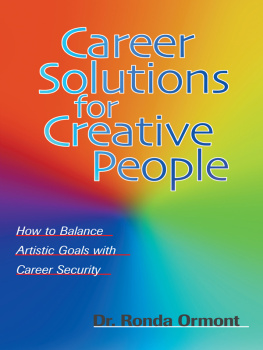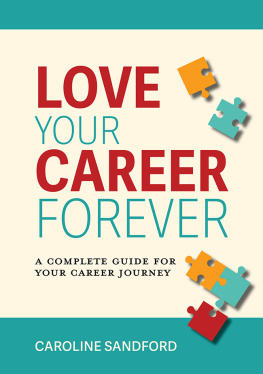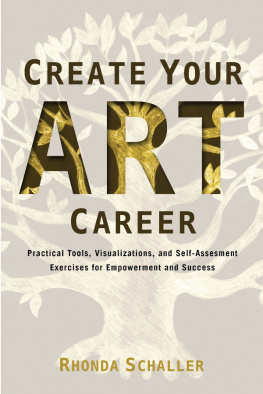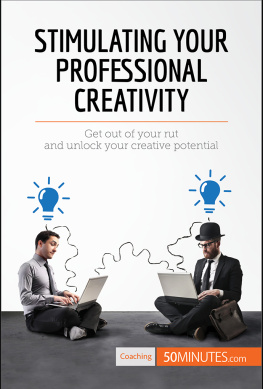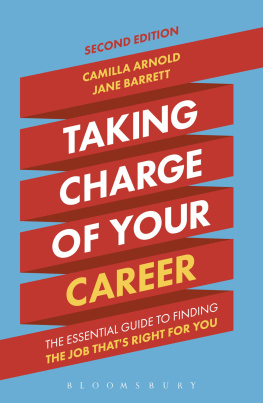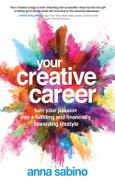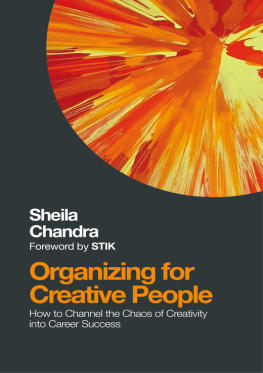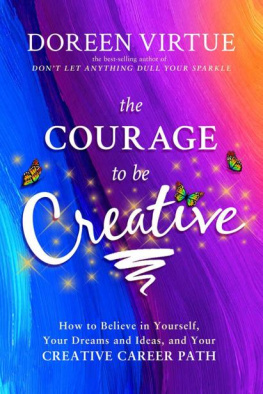Career Solutions for Creative People
Career Solutions for Creative People
How To Balance Artistic Goals With Career Security
by Ronda Ormont, Ph. D.

2001 Estate of Ronda Ormont Blumberg
All rights reserved. Copyright under Berne Copyright Convention, Universal Copyright Convention, and Pan-American Copyright Convention. No part of this book may be reproduced, stored in a retrieval system, or transmitted in any form, or by any meanselectronic, mechanical, photocopying, recording, or otherwisewithout prior permission of the publisher.
05 04 03 02 01 5 4 3 2 1
Published by Allworth Press
An imprint of Allworth Communications
10 East 23rd Street, New York, NY 10010
Cover design by Douglas Design Associates, New York, NY
Page composition/typography by
John Cole GRAPHIC DESIGNER, Santa Fe, New Mexico
ISBN: 1-58115-091-1
Library of Congress Cataloging-in-Publication Data:
Ormont, Ronda.
Career solutions for creative people: how to balance artistic
goals with career security/by Ronda Ormont.
p. cm.
Includes index.
ISBN 1-58115-091-1
1. Job hunting. 2. Creative ability. I. Title
HF5382.7 .076 2001
650.15dc21
2001022262
To: My daughter: Perri Ormont Blumberg
My husband: Henry Blumberg
My parents: Irving and Sylvia Ormont
Ah, but a mans reach should exceed his grasp,
Or whats heaven for?
Robert Browning, Andrea Del Sarto
The publication of this book would not have been possible without the wise counsel of my friend and agent Wendy Lipkind, the tireless efforts of my editorial assistant Suzanne Fox, and the patience and understanding of my family.
The editors wish to thank Patch Schwadron, Career Councelor at the Actors Work Program, for her invaluable suggestions.
Contents
R onda Ormont has given us a unique and valuable addition to the vast library of career books. She has accomplished this through her considerable experience working with creative people and by bringing her own creativity to the content and structure of this book.
The concepts of the career-counseling process are familiar to most professionals in the field, and there is no shortage of books advising job hunters. It is rare to find the kind of innovative approach presented here. The reason for this is that the focus of traditional career counseling has been matching individuals with careers that fit their interests, skills, and values. While consideration is given to juggling jobs or changing careers to fit various life exigencies, rarely do counselors address the possibility of permanently combining two career tracks. Yet this is precisely what may be the perfect career solution for creative people.
In this book there is both a sensitivity to the creative personality and a detailed, pragmatic plan for finding the balance between creative expression and making a living. The author values creative people and affirms her belief that the world does, too. At the same time, and with respect for individuality, she guides the reader through the process of decision-making and job hunting. She does this with specific, practical suggestions. At the same time she demonstrates an appreciation for that special balance necessary to allow creativity to flourish. This is truly a balancing act in itself!
In each chapter, the reader will find excellent examples of how this process has worked for people in the creative art fields. The life stories and career strivings of these individuals enrich and inform each step of the process. Easy-to-follow exercises will help the readers to test themselves and determine their own goals.
The traditional concepts of career decision-making, such as self-assessment, researching career options, and job hunting, are adapted to the special needs of creative people. But many of the chapters, such as Employment versus Self-Employment and Understanding the World of Work, will be appropriate for many job seekers. The detailed creative suggestions on preparing for and going after the job you want (in Section III) will benefit all job hunters.
Ronda Ormont was a longtime member of the Career Development Specialist Network. As a participant in our programs she both received and gave support and encouragement. Her enthusiasms and insights enriched our meetings. Her untimely death grieves all who knew her. She will be missed as a professional devoted to her field of work and as a friend to all her colleagues. This book will be a monument to her memory.
Carol Feit Lane, Ph.D.
President, Career Development Specialists Network
New York, NY
November 2000
How To Use This Book
In order that people may be happy in their work, these three things are needed: They must be fit for it; they must not do too much of it; and they must have a sense of success in itnot a doubtful sense, such as needs some testimony of others for its confirmation, but a sure sense, or rather knowledge, that so much work has been done well, and fruitfully done, whatever the world may say or think about it.
W.H. Auden
A s a creative or performing artist today, you can find scores of books written to help you identify the sources of your creativity, hone your i gifts, and improve your skills in the artistic discipline youve chosen. Many of these books are wonderful. Some are even listed in the Resources section at the end of this volume. Yet in the course of over a decade of providing career-related counseling to thousands of creative people, I have become convinced that the biggest problem facing artists is actually not a creative one.
Instead, its a practical dilemma. Specifically, how can creative people find the time and freedom necessary to pursue their art, while also making a sufficiently stable and rewarding living?
All too often, they cant.
This is a problem that faces thousands of gifted people throughout this country (and, indeed, the world). It is perhaps the single most common reason that creative people fail to flourish or succeed. Yet no books specifically address this dilemma.
This book has been written to fill that gap.
I am a career counselor with a Ph.D. in counseling psychology and over twenty years of experience in working with diverse groups of individuals, including students, executives, individuals in midcareer transition, and senior citizens. In 1986, I cofounded the Actors Work Program (now a division of The Actors Fund of America), an employment and training program for entertainment industry professionals such as actors, singers, dancers, musicians, set and costume designers, directors, and writers. As Director of Training and Counseling Services there, I have personally interviewed over 5,000 such artists and developed a broad range of career-related counseling services to meet their diverse needs. My frequent lecture and speaking engagements across the country, as well as the articles I publish in professional and trade journals, all build on this hands-on experience. Even more importantly, so does this book.
It is not my aim to fix what isnt broken. This book takes for granted that you, the reader, are already highly creative. I do not consciously try to make you more soalthough youll find that the kind of balance and security I help you to achieve may well enhance imagination and creativity as a side effect. Instead, this book is designed to help you, the creative individual, to understand how important it is to balance your creative and career commitments and then to help you find the type of balance that works for your needs and your life.
Next page
